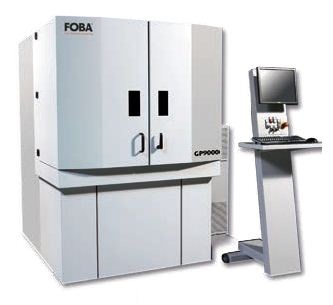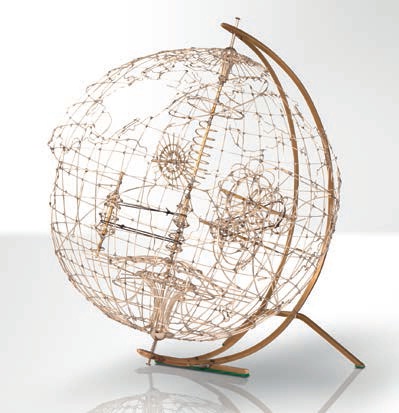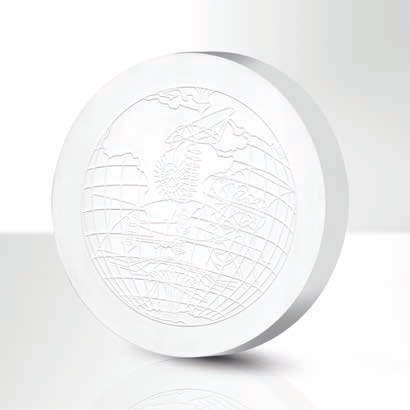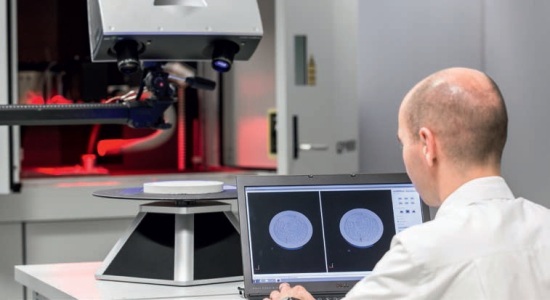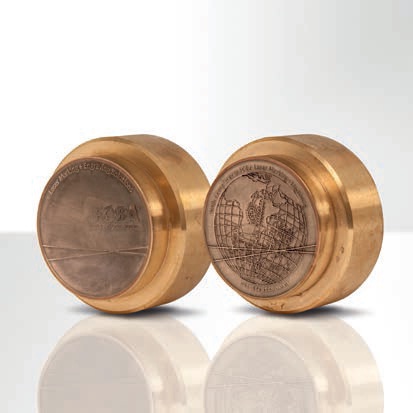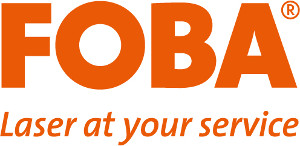Overview
Laser welding is one of the important aspects of materials engraving processing technology, mainly divided laser welding and continuous laser welding.
Pulsed laser spot and seam welding is used primarily within the thickness of 1 mm thin-walled metallic material, which belongs to the heat conduction welding process, i.e., laser radiation heating of the workpiece surface, and then diffuses through the internal heat transfer based material, by controlling the waveform of the laser pulse, the width , peak power and repetition frequency and other parameters, so that a good connection is formed between the workpieces. In the 3 C product casing, lithium batteries, electronic components, mold welding industry has a large number of applications. The biggest advantage is the pulsed laser welding workpieces overall temperature rise is very small, small heat affected area, the workpiece deformation.
Most of the continuous laser welding high-power, 500 watts or more, usually more than 1 mm plate should use this laser. Its mechanism is based on the deep penetration welding hole effect, the aspect ratio can be achieved 5:1 above, welding speed, thermal deformation. In machinery, automobile, shipbuilding and other industries has been widely applied. There are some low-power continuous laser power between tens to hundreds of watts, they are used most often in plastic welding and laser soldering these industries.
works:
First, the laser power pulsed xenon lamp lit by a laser pulse discharge xenon lamp power supply, a certain frequency, pulse width certain light waves, the waves radiated through the condenser chamber to Nd 3+: YAG laser on the crystal, inspired Nd 3+: YAG laser crystal light, and then after the laser cavity resonance, issue a wavelength of 1064nm pulsed laser, the pulsed laser through the beam expander, after reflection, (or via optical fiber transmission) focus on playing in the desired weld objects; in the PLC or industrial PC under control, mobile CNC table to complete the welding. Frequency, pulse width, wave, table speed, the moving direction of the welding laser pulses required are available microcontroller, PLC, or industrial PC controlled by the frequency of the laser pulse width can be adjusted to different settings to control the pulse laser energy.
Fiber works:
When the pump light through the fiber rare earth ions, will be absorbed by the rare earth ion. Then the absorbed photon energy rare earth atoms excited to a higher electronic lasing level would be to realize the ion inversion, the inverted number of ions in the form of radiation will be transferred from high energy level to the ground state, and the release energy, completed by stimulated emission of radiation. Generated by the fiber laser optical output, and with the support of the table with the completion of the appropriate welding. Fiber lasers into the pulse fiber laser and continuous fiber lasers. Among them, pulsed fiber lasers can be used to adjust the laser pulse energy through a single point of peak power laser frequency, pulse width setting; continuous fiber lasers by setting the average laser power to regulate the output laser power. The working principle of the semiconductor laser: through certain incentives in the energy band of the semiconductor material between the (conduction band and the valence band), or the impurity band of the semiconductor material (acceptor or donor) between the energy levels, to achieve non-equilibrium number of particles in the carrier reverse, when a large number of electrons and holes recombine in the population inversion state, they generate stimulated emission effect. The semiconductor laser generates a laser welding can also be output through the optical fiber.
Characteristics:
Laser welding is a new type of welding, laser welding, mainly for thin-walled materials, precision parts welding can be realized spot welding, butt welding, stitch welding, seal welding, etc., and its features are:
Weldable materials and industrial applications:
Laser welding can be applied to a variety of metal alloys of titanium, nickel, tin, zinc, copper, aluminum, chromium, niobium, gold, silver and its alloys, and steel, Kovar alloy welding material between the same species, may also be used in copper – a variety of dissimilar metal weld between copper – nickel, nickel – titanium, copper - titanium, titanium – molybdenum, brass – copper, mild steel.
Widely used in mobile communications, electronic components, eyeglasses and clocks, jewelry, metal products, precision instruments, medical equipment, auto parts, gifts and other industries.
Comparison of laser welding with traditional welding methods
The style of Laser welding machine
I produced the laser welding machine product types: one type of welding machine and laser optical output matching welding systems. Optical output laser welding system is complete with standard laser system closer to the user needs welding table (workstation or pipeline) constituted improve weld quality and efficiency; fiber laser output into: YA G optical output pulse lasers, pulsed fiber lasers, CW fiber lasers, semiconductor lasers and the like. Which contain fiber output pulse YAG laser WF series and PB series.
The difference between various types of lasers

The difference between the non-fiber output pulse YAG laser and optical output pulse YAG laser


The difference between the current feedback control and laser power feedback control Energy splitting, splitting time with the high-speed spectroscopic (with three-way splitter for example)
High-speed spectroscopic: In addition to the energy splitting, splitting time outside, my company’s laser spectroscopic methods as well as high-speed spectroscopy. Different from traditional shutter, high speed spectral energy at an average frequency of 80Hz to quickly switch the optical path, efficiency is greatly improved. Which, when multi-position welding, the speed advantage is obvious. Not only can greatly save the cost of equipment, it can effectively reduce equipment footprint, the corresponding maintenance costs can also be savings.
Laser welding is one of the important aspects of materials engraving processing technology, mainly divided laser welding and continuous laser welding.
Pulsed laser spot and seam welding is used primarily within the thickness of 1 mm thin-walled metallic material, which belongs to the heat conduction welding process, i.e., laser radiation heating of the workpiece surface, and then diffuses through the internal heat transfer based material, by controlling the waveform of the laser pulse, the width , peak power and repetition frequency and other parameters, so that a good connection is formed between the workpieces. In the 3 C product casing, lithium batteries, electronic components, mold welding industry has a large number of applications. The biggest advantage is the pulsed laser welding workpieces overall temperature rise is very small, small heat affected area, the workpiece deformation.
Most of the continuous laser welding high-power, 500 watts or more, usually more than 1 mm plate should use this laser. Its mechanism is based on the deep penetration welding hole effect, the aspect ratio can be achieved 5:1 above, welding speed, thermal deformation. In machinery, automobile, shipbuilding and other industries has been widely applied. There are some low-power continuous laser power between tens to hundreds of watts, they are used most often in plastic welding and laser soldering these industries.
works:
First, the laser power pulsed xenon lamp lit by a laser pulse discharge xenon lamp power supply, a certain frequency, pulse width certain light waves, the waves radiated through the condenser chamber to Nd 3+: YAG laser on the crystal, inspired Nd 3+: YAG laser crystal light, and then after the laser cavity resonance, issue a wavelength of 1064nm pulsed laser, the pulsed laser through the beam expander, after reflection, (or via optical fiber transmission) focus on playing in the desired weld objects; in the PLC or industrial PC under control, mobile CNC table to complete the welding. Frequency, pulse width, wave, table speed, the moving direction of the welding laser pulses required are available microcontroller, PLC, or industrial PC controlled by the frequency of the laser pulse width can be adjusted to different settings to control the pulse laser energy.
Fiber works:
When the pump light through the fiber rare earth ions, will be absorbed by the rare earth ion. Then the absorbed photon energy rare earth atoms excited to a higher electronic lasing level would be to realize the ion inversion, the inverted number of ions in the form of radiation will be transferred from high energy level to the ground state, and the release energy, completed by stimulated emission of radiation. Generated by the fiber laser optical output, and with the support of the table with the completion of the appropriate welding. Fiber lasers into the pulse fiber laser and continuous fiber lasers. Among them, pulsed fiber lasers can be used to adjust the laser pulse energy through a single point of peak power laser frequency, pulse width setting; continuous fiber lasers by setting the average laser power to regulate the output laser power. The working principle of the semiconductor laser: through certain incentives in the energy band of the semiconductor material between the (conduction band and the valence band), or the impurity band of the semiconductor material (acceptor or donor) between the energy levels, to achieve non-equilibrium number of particles in the carrier reverse, when a large number of electrons and holes recombine in the population inversion state, they generate stimulated emission effect. The semiconductor laser generates a laser welding can also be output through the optical fiber.
Characteristics:
Laser welding is a new type of welding, laser welding, mainly for thin-walled materials, precision parts welding can be realized spot welding, butt welding, stitch welding, seal welding, etc., and its features are:
- With a high aspect ratio, weld width is small, small heat-affected zone, small deformation, welding speed.
- Welds smooth, beautiful, no treatment or simple treatment process after welding.
- High weld quality, nonporous, can reduce and optimize the base metal impurities can be refined after tissue welding, weld strength, toughness, at least equivalent to or even more than the base metal.
- Can be precisely controlled, focused small points of light, high-precision positioning can be easily automated. Some welding can be achieved between the dissimilar materials.
Weldable materials and industrial applications:
Laser welding can be applied to a variety of metal alloys of titanium, nickel, tin, zinc, copper, aluminum, chromium, niobium, gold, silver and its alloys, and steel, Kovar alloy welding material between the same species, may also be used in copper – a variety of dissimilar metal weld between copper – nickel, nickel – titanium, copper - titanium, titanium – molybdenum, brass – copper, mild steel.
Widely used in mobile communications, electronic components, eyeglasses and clocks, jewelry, metal products, precision instruments, medical equipment, auto parts, gifts and other industries.
Comparison of laser welding with traditional welding methods
| Welding methods | Heat affected zone | Heat distortion | Weld quality | Whether to add solder | Welding environment |
| Laser welding | Small | Small | Good | No | No special requirements |
| welding | general | general | general | Yes | Overall warming |
| TIG | Large | Large | general | Yes | Required electrode |
| Resistance Welding | Large | Large | general | No | Required electrode |
| Plasma Arc Welding | general | general | general | Yes | Required electrode |
| Electron beam welding | Small | Small | Good | No | Vacuum |
The style of Laser welding machine
I produced the laser welding machine product types: one type of welding machine and laser optical output matching welding systems. Optical output laser welding system is complete with standard laser system closer to the user needs welding table (workstation or pipeline) constituted improve weld quality and efficiency; fiber laser output into: YA G optical output pulse lasers, pulsed fiber lasers, CW fiber lasers, semiconductor lasers and the like. Which contain fiber output pulse YAG laser WF series and PB series.
The difference between various types of lasers

The difference between the non-fiber output pulse YAG laser and optical output pulse YAG laser


The difference between the current feedback control and laser power feedback control Energy splitting, splitting time with the high-speed spectroscopic (with three-way splitter for example)
High-speed spectroscopic: In addition to the energy splitting, splitting time outside, my company’s laser spectroscopic methods as well as high-speed spectroscopy. Different from traditional shutter, high speed spectral energy at an average frequency of 80Hz to quickly switch the optical path, efficiency is greatly improved. Which, when multi-position welding, the speed advantage is obvious. Not only can greatly save the cost of equipment, it can effectively reduce equipment footprint, the corresponding maintenance costs can also be savings.
